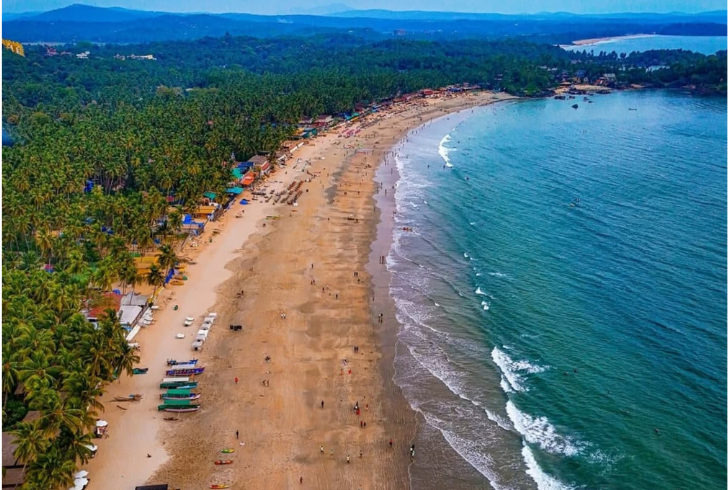Choosing a country to live and work remotely often comes down to cost, connectivity, and overall quality of life. In 2025, India secured the top spot as the most affordable destination for digital nomads, offering an unmatched combination of low living expenses, cultural depth, and thriving tech hubs.
The recognition comes from the Global Digital Nomad Report 2025 by Global Citizen Solutions, which examined 64 destinations worldwide. The study compared essential factors such as accommodation, food, transport, and workspace expenses, alongside the growing availability of digital nomad visas.
Why India Tops the List

Instagram | beautyofindiainsta | Goa’s beaches and culture contribute to India’s number-one ranking for digital nomads.
India’s position at number one comes from a combination of factors that directly impact digital nomads:
Cost of living
Day-to-day expenses like rent, groceries, and transport remain well below what nomads would pay in many other destinations.
Tech-friendly hubs
Bengaluru, Delhi, and Mumbai have fast internet, abundant coworking spaces, and lively startup ecosystems that make working remotely seamless.
Cultural variety
From age-old traditions to contemporary conveniences and a food scene that spans every region, India blends affordability with constant discovery.
Scenic escapes
Goa stands out for its beaches, colonial churches, and coastal cuisine, giving nomads a balance of work and leisure.
For digital nomads, this mix of low costs and cultural richness makes India feel not just practical but inspiring.
The Rise of Digital Nomad Programs
Remote work’s growth, powered by technology and workplace flexibility, has accelerated the spread of nomad programs worldwide.
According to the report, 91% of current nomad visa programs were launched after 2020, reflecting the growing demand for flexible residency options.
Globally, these programs vary in structure. Some allow only temporary stays, while others offer long-term opportunities, including pathways to residency or citizenship. Among the 64 countries studied, 14 provide routes to permanent residency, and 3 extend a direct path to citizenship.
Other Countries in the Top 10
India may top the list, but several other nations also stand out as affordable and attractive for digital nomads. The top 10 destinations identified include:
1. India
2. Ecuador
3. Malaysia
4. Indonesia
5. Colombia
6. Namibia
7. South Africa
8. Armenia
9. Mauritius
10. Serbia
Each of these countries provides a mix of affordability, cultural richness, and increasing opportunities for remote work communities.

Instagram | netherlandstravelers | While offering a high quality of life, the Netherlands is not an affordable place to live.
The report also points out an important contrast. While countries like Iceland and Norway score high in safety, public services, and infrastructure, they remain some of the most expensive places to live and work remotely. The Netherlands, for instance, ranked highest for quality of life but falls outside the affordability index.
For many remote workers, the equation isn’t just about high standards of living—it’s about sustainability. India, with its rich cultural fabric, strong internet connectivity, and lower day-to-day expenses, offers a path to maintaining the lifestyle without financial strain.
Regional Breakdown of Programs
The study shows that the Americas lead the way, hosting 36% of all digital nomad programs. Europe isn’t far behind at 33%, while Asia accounts for 9%. These numbers reflect how governments are increasingly shaping visa frameworks to draw in mobile professionals.
It’s a recognition that remote workers contribute more than tourism; they inject long-term economic value into local markets.
A Global Movement Shaping the Future
India’s position as the most affordable destination captures a wider transformation. Remote work is no longer a niche trend—it’s part of the professional mainstream. Countries are competing with policies and programs to attract this new class of workers.
With costs that allow long-term stays, energetic cities, and supportive ecosystems, places like India, Ecuador, and Malaysia show how affordability and opportunity can go hand in hand.




